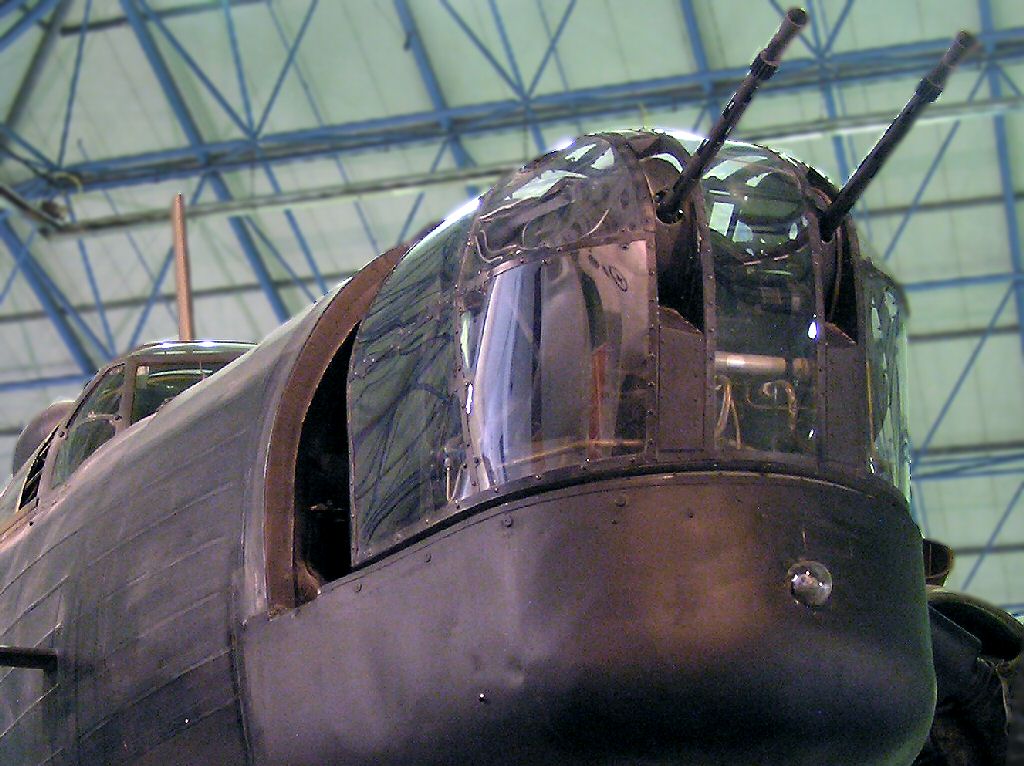|
My Uncle flight sergeant Cyril Moore flew two tours as a rear gunner during the early years of the war. In his flight log there are a number of entries about the damage sustained by his and other Wellington Bombers that on most other aircraft would have been fatal. The most dramatic event was when the wing hit a barrage balloon cable and survived. To read his flight logs from training to end of tour in Italy after bombing Pisa
CLICK HERE
The Wellington was armed with twin .330 machine guns in the powered nose and tail turrets. It also had 2 manually-operated .303 guns in the beam positions and could carry a 4,500 lb bomb load. Early daylight operation losses proved the inadequacy of the turret fire-power in fending off attacking fighters, the Wellington went on to build up a great reputation for reliability and ruggedness in night bombing operations. The Wellington Bomber has a maximum speed of 255 mph (411 km/h) and a cruising speed of 180 mph (290 km/h). The range was 1,540 miles with a full bomb load.
In 1932 the British Air Ministry sent out Specification B9/32 for a new bomber. Vickers proposed a twin-engined bomber that used a new geodetic construction that weaved individual struts of the fuselage structure to provide an incredibly resilient airframe, able to absorb tremendous damage, yet still light weight. The first prototype Wellington flew in June 1936 and was known as the Vickers Crecy when it appeared at the 1932 Hendon Air Display as such. The first production Wellington flew in December 1937. At the time it was revolutionary. It could carry three times the payload of the other Heyford bomber the then in service with the RAF.
The first squadron to receive the Wellington was No 99 based at RAF Mildenhall, Suffolk, in October 1938 and by September 1939 a further seven squadrons (Nos 9, 37, 38, 115, 149, 214 and 215), and all in No 3 Group, had traded their Heyfords and Hendons for Wellingtons.
The type was principally involved in day operations, and the very first full day of conflict, 4 September 1939, saw 14 Wellingtons from Nos 9 and 149 Squadrons involved in action against the German fleet at Brunsbüttel. This and subsequent daylight raids were flown against steadily increasing fighter opposition and the losses mounted. Bomber Command's thinking of that time, namely that a concentrated formation of a bombers could defend itself against enemy opposition, was shown to be folly by two raids flown in December 1939. Night Bombing raids became the norm for RAF Bomber Command.
It had six crew members: pilot, radio operator, navigator, bomb aimer/nose gunner, tail gunner and waist gunner. Wellingtons would serve in Europe, the Mediterranean, North Africa and the Far East in various different roles including mine laying, troop transportation, submarine hunting, photo reconnaissance, pathfinding and of course bombing.
These aircraft photographs are great reference sources if your painting 1/72 scale, 1/48 scale or 1/24 scale plastic model airplane Airfix, Tamiya, zvezda, revel, Pavala aircraft kits or you’re into flying and painting radio RC controlled model planes.
There are many aviation books published about the Vickers-Armstrong Wellington Wimpy long range medium Bomber
www.MooreAircraft.com
Tell your friends about us. Send them an e-mail
|
